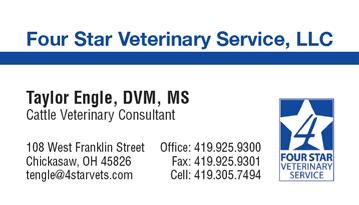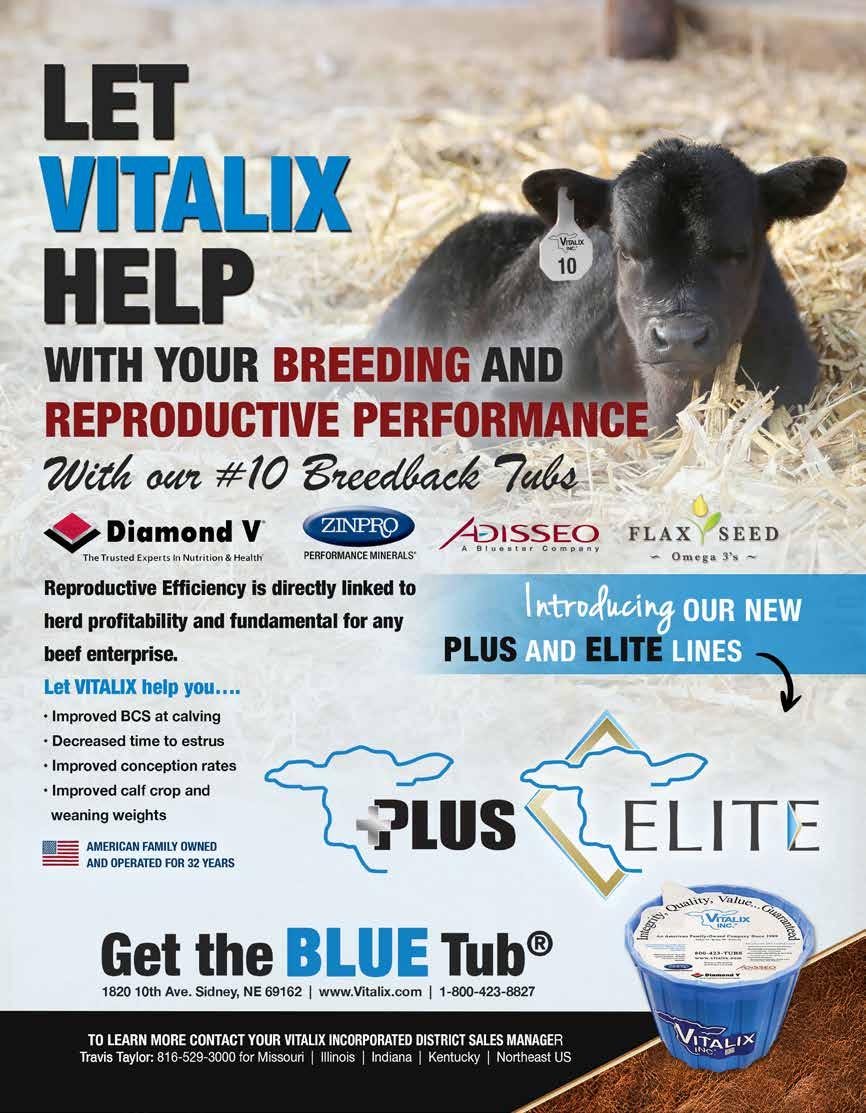
3 minute read
The Ruff Review
from Spring 2021
by ohiocattle
By Garth Ruff, OSU Extension Beef Cattle Field Specialist
FEED YOUR COWS AND YOUR FORAGE
Advertisement
Spring has arrived, a successful Ohio Beef Expo is in the rear view and for many Ohio beef producers, their calves are on the ground. This is a critical time in the beef and forage production cycle for many producers, especially those with spring calving herds. As we come into the forage growing season and wrap up much of the cold weather hay feeding, now is an important time to consider nutrition, not only for the cow herd but for our forage crops as well. The highest energy demand of the cow is during peak lactation, approximately 60 days post calving. During this time in the production cycle, we also are asking that cow to return to estrous and be rebred in a timely manner. To maintain a 365-day calving interval, we have roughly 85 days between calving and getting that female rebred in which we need to supply high quality forage, either in the form of lush, growing pasture or stored forages. If unable to graze due to soil conditions, feed higher quality hay, 2nd or 3rd cutting, or supplement energy via corn silage or whole shelled corn. The need for supplemental energy will depend in part on the cow’s body condition at calving and milk production. When making genetic selections, milk production should be matched to available feed resources. Providing high quality feed is even more important when we think about first calf heifers who in addition to lactation, have other requirements for growth and development. The challenge of getting two-year-old females rebred is only further complicated when forage quality is poor during the stage of the production cycle between calving and breeding. Underfeeding females during this time will impact two calf crops, the calf that is currently suckling and potentially the next crop, if rebreeding and conception is delayed. Now is also a good time to consider the nutrient requirements of our hayfields and pastures. More often than ideal, forage fertility is often neglected. Maintaining optimum forage fertility will improve yields and feed quality compared to nutrient deficient forage crops. Performing soil tests on a regular basis, at a minimum of every three years, is key to maintaining forage fertility. Perform the soil tests either in the fall or spring but be consistent in when you do it. In many cases, especially in eastern/southern Ohio where we tend to have more acidic soils, correcting pH is a good place to start. When soils are acidic, below a pH of six, mineral availability to plants is often reduced. A spring or fall lime application can help rectify low pH issues. Other nutrients to consider are phosphorus and potassium. Phosphorus can be applied either before or after a first cutting hay crop or in the fall. Potassium is similar, although potassium applications should not exceed 300 pounds per acre per year. The goal with these two nutrients is to build and maintain fertility levels. Nitrogen can also be used to increase yield and quality of forage crops that are predominantly grass. Nitrogen applications should be minimal early in the spring and in stands with a greater percentage of legumes, alfalfa or clover. Forage fertility can have significant impacts on forage yield and quality. For the coming growing season OSU Extension has developed a series of forage fertility trial protocols designed to be implemented on livestock and forage farms across Ohio. If interested in conducting a forage fertility trial, or improving forage quality on your farm, contact me at ruff.72@osu.edu or contact your local OSU Extension educator.








